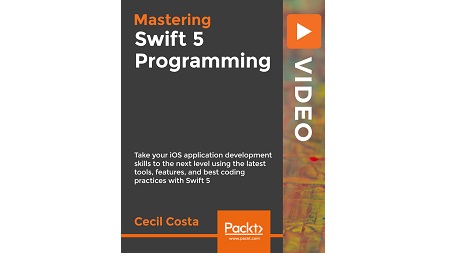
English | MP4 | AVC 1920×1080 | AAC 48KHz 2ch | 3h 09m | 459 MB
Build robust applications and write faster and more efficient code with Swift 5 and Xcode 10
Swift is the definitive language for Apple development today. It’s a vital part of any iOS and macOS developer’s skillset, helping them to build the most impressive and popular apps on the App Store the sort of apps that are essential to iPhone and iPad users every day.
In this course, you’ll find the key features of Swift 4.x and quickly learn how to use the newest updates to your development advantage. From Objective-C interoperability and ARC to closures and concurrency, this advanced Swift guide will develop your expertise and help you become fluent in this vital programming language.
You’ll give an in-depth knowledge of some of the most sophisticated elements of Swift development, including protocol extensions, error-handling, and concurrency. You’ll implement the power of protocol-oriented programming to write flexible and easier to manage code.
By the end of this course, you’ll be well acquainted with Swift and other essential tools, and you will be ready to tackle advanced iOS and macOS applications with Swift.
This course takes a step-by-step approach to cover the complex subjects required to create applications. Useful tips and tricks are included throughout the course to help you.
What You Will Learn
- Discover the core components of Swift 5, including operators, collections, control flows, and functions
- Work with functions, structures, and protocols
- Implement design patterns using protocol-oriented programming
- Take advantage of Grand Central Dispatch framework to manage concurrent operations
- Write robust and efficient code and avoid common pitfalls using Swift 5
- Discover the easy way to catch and fix memory leaks in your apps and make it faster and more responsive by using instruments
Table of Contents
What’s New in Swift 5.0
1 The Course Overview
2 Introduction and Installation
3 Implementing Raw Strings
4 Dynamically Callable Types
5 Custom String Interpolation
6 New Functional Programming Features
7 Swift 5 Miscellaneous
Swift Objects
8 Access Control
9 Exploring Methods and Parameters – Part One
10 Exploring Methods and Parameters – Part Two
11 Object Initializers
12 Using Closures
13 GCD and Concurrency
Protocol Oriented Programming
14 Diving into Protocol Oriented Programming
15 Differentiating Between Classes and Structs
16 Creating Protocol Extensions
17 Generics and Protocols
Adaptive UIs
18 View Controller Life Cycle
19 User Interaction
20 Adaptive Layout
21 Adaptive Layout in Practice
Error handing
22 Representing and Throwing Errors
23 Propagating and Trapping Errors
24 Different Ways of Using “try”
25 Result
26 Tips and Concepts
Debugging and Testing
27 Behaviors and Breakpoints
28 Using LLDB – Part One
29 Using LLDB – Part Two
30 Debugging with Gauges and Instruments
31 Debugging the User Interface
Server-Side Swift with Vapor
32 Getting Started with Vapor
33 Creating an API
34 Controllers and JSON
35 Templating with Leaf
Using Mix and Match
36 What is Mix and Match and When to Use It
37 Using Swift and Objective-C Together
38 Using Swift and C Together
39 Creating Your Own Library
Resolve the captcha to access the links!